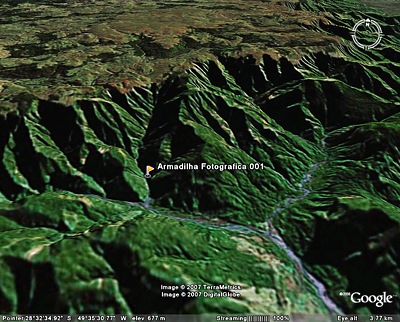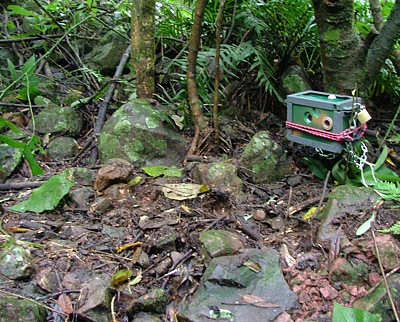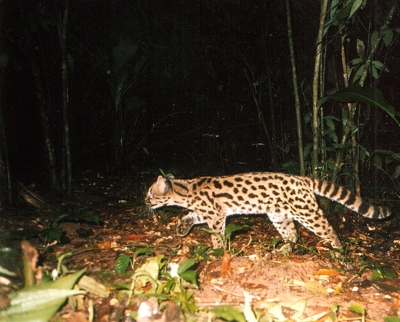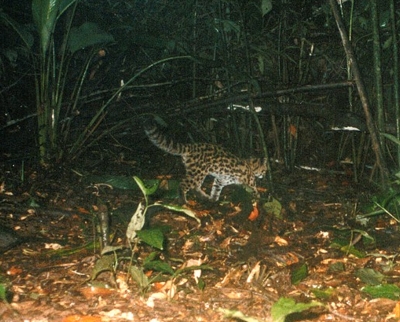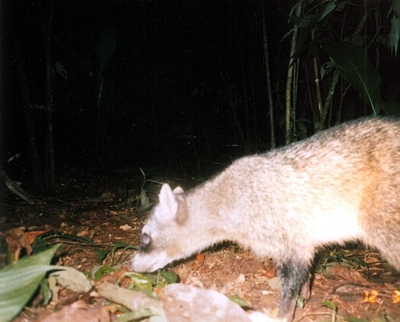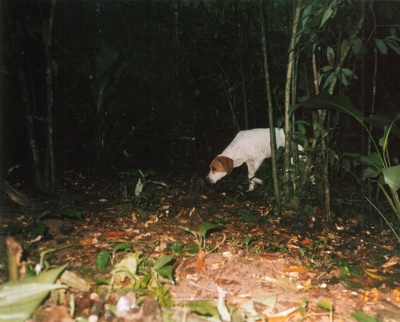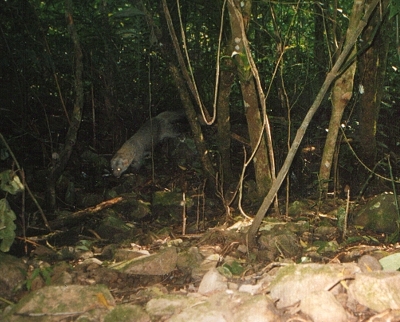
| Home | |
| Project | |
| Wild felines | |
| Extent | |
| Unit of Conservation | |
| Environmental education | |
| Some information about the research | |
| Team | |
| Links | |
| Contacts | |
Exit of Serra Geral Field
(23/04/07) Back to the valleys of the State Biological
Reservation of Aguaí, we proceeded heading for the points where
the photographic traps were installed to register the felines. In the
maintenance of the trap # 001, we verified that the camera had just
taken 13 photos and we decided to leave the film be used until it finishes.
In the following point, trap # 002, all the photos had been taken. The
photos were developed and we were surprised by one of the 8 Brazilian
species that haven’t been registered yet. At this time, we photographed
the Leopardus wiedii, Margay; an interesting thing about these
animals is that unlike many other cats, the Leopardus wiedii
is adapted physically to the life in trees, with the ability to rotate
the posterior feet, they can go down and up climbing the trees.
Leopardus wiedii uses its abilities to hunt rodents, small lizards,
big insects, and frogs among the dossel of tropical forests. Besides
the Leopardus wiedii, we registered another feline that due
to the distance of the picture was not possible to be identified. Another
carnivorous one photographed was the Procyon cancrivorous.
This animal possesses a black mask around the eyes and yearned tail,
the main characteristics of the species. The paws have long fingers,
with quite short coat, what it’s called crab eating racoon.
|
|
|
|
(04/06-08/07) On the 04/06/07 the third visit to the field
was accomplished, where it was done the monitor and the maintenance
of the photographic camera # 001. In the second series of photos, no
image of felines was captured, we had only the registration of the species
it had Angered (Eyra barbarian).
|
In the afternoon of the 04/8/07 was installed the photographic trap
#002, with altitude of 346m, coordinates 28th 33 '. 523 '' S 49th 35
'. 281 '' W. This trap this at a distance of 2 km from the trap # 001.
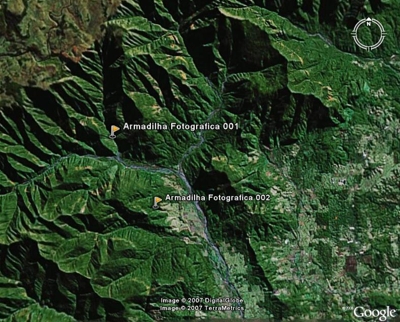 |
| |
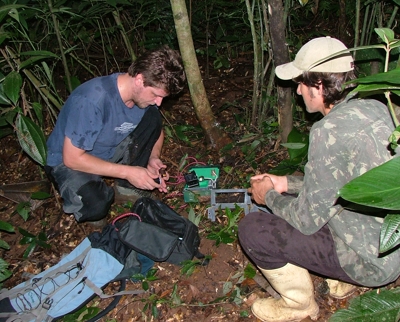 |
| |
(03-24-2007) After 14 days, we returned again to the
area of the photographic snare 001, so we could change the batteries
and the film. We were anxious to see if we had captured some image.
After developing the photos, we were suprised, because we had gotten
on film the third largest feline im América, Ocelot (Leopardus
pardalis) and one Angered (Eyra bárbara), a very
agile climber. For us, researchers, it was na important conquest, we
have gotten right on the first time them on the photograph one of the
three species of the felines that we are researching.
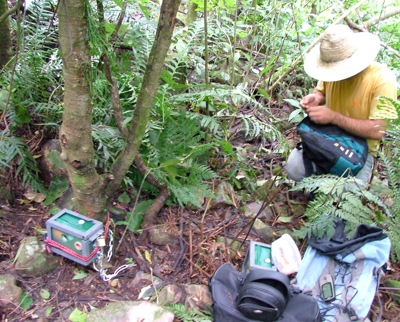 |
| |
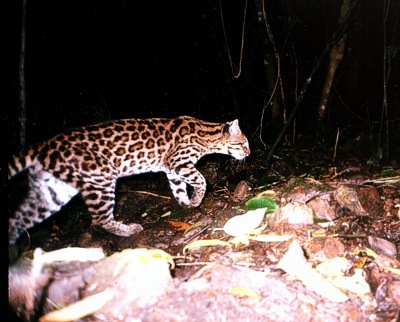 |
| Species:Ocelot
(Leopardus pardalis) Photo:03/16/2007 - 5:55 Local: State Biological Reservation of Aguaí Source: Felines of Aguaí's Project |
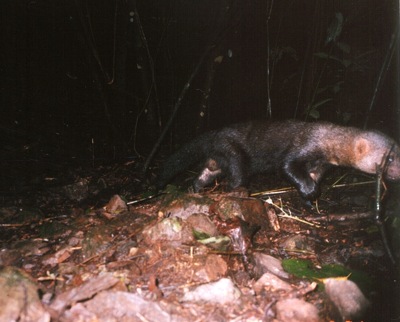 |
| Species:Angered (Eyra bárbara) |
(03-11-2007) In the search of our objective, we accomplished
our first exit to the field. Inside within Siderópolis district
its mountains go through Serafim creek, we installed one of the photographic
snares to register the felines. Attitude of 364 m, Coordinates 28th
33 '. 277 '' S 49th 35 '. 252 '' W. The rainy weather didn’t help
a lot. Even so, the camera was installed. Within 15 days we will come
back to that point to change the films and batteries and later on, to
develop l the photos and to analyze them.
